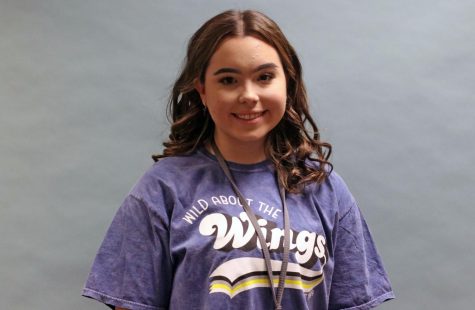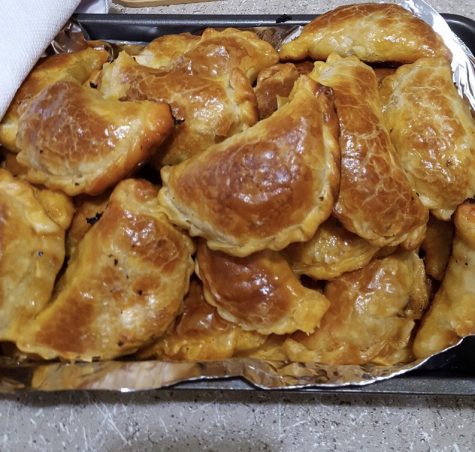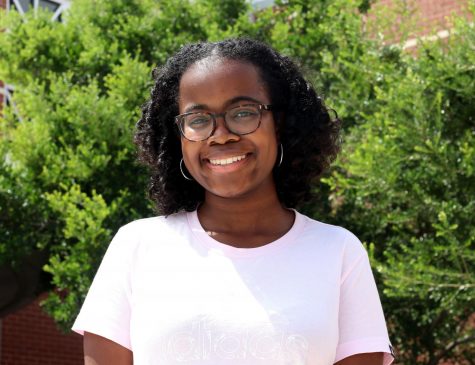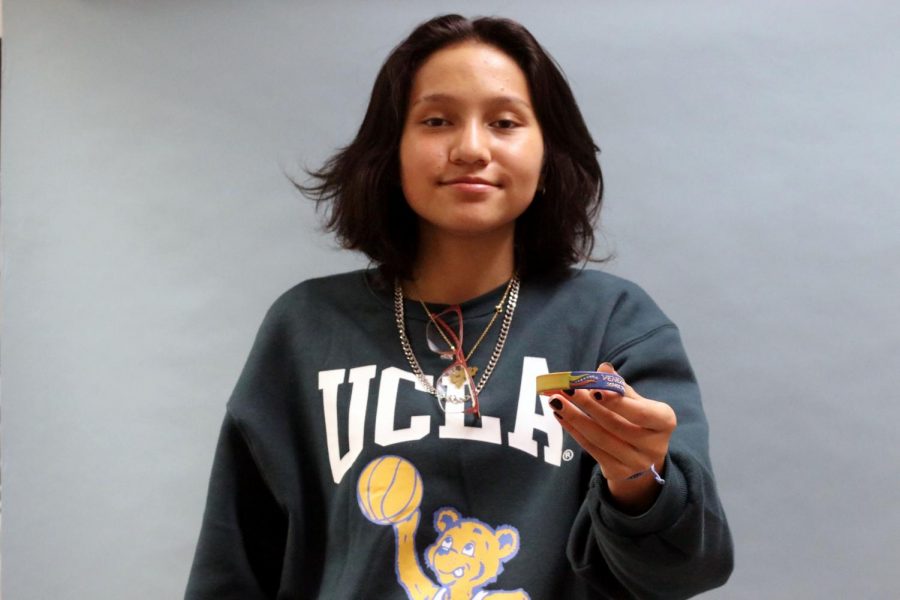Q&A: Hispanic students speak on embracing their heritage
photo by Sarosh Ismail
Sophomore Camila Segura shows off the Venezuela bracelet her grandma gave her. Segura wears her Venezuela bracelet every day to remind her of her country.
Sept. 15 – Oct. 15 is nationally celebrated as Hispanic Heritage month. In a school as diverse as Hebron, students of Hispanic heritage are well-represented. Even with shared heritage, these students vary in country of origin, birthplace and bilingualism.
Q: What is your ethnicity?
Sophomore Camila Segura: “I’m Venezuelan, but my mom is Asian. I’m basically half Asian, half Venezuelan.”
Senior Sebastian Castellino Herrada: “Both of my parents are from Argentina, so I am Hispanic.”
Senior Jammy Johnson: “I’m Puerto Rican. Both of my parents are Puerto Rican. I was actually born in Panama.”
Q: Who inspired you to embrace your culture?
Segura: “My cousin [inspires me in embracing my culture]. She lives in Venezuela and she’s basically like my sister, I talk to her every single day. And when I talk to her, I feel connected to my culture. We speak Spanish, we talk about what’s going on, and she’s my role model.”
Castellino Herrada: “Probably my parents the most, considering I was born in Argentina. I moved here when I was around two years old, so a lot of the cultural influence I got, I got from them teaching me how things were in Argentina, their stories and all of the traditions they had over there they brought over here.”

Johnson: “My parents mostly [inspired me in embracing my culture]. I know for me personally it’s hard [because] you want to fit in, especially in America, but I’ve never had a problem staying true to my culture because I feel like it defines me as a person and it makes me more original. [My parents] always taught me to never be ashamed of that. I think it’s really cool that I have a different background than most people do.”
Q: Have you ever been to your mother country?
Segura: “I actually lived [in Venezuela] for 11 years and then I moved in 2017 to the U.S., so I basically spent my whole life there.”
Castellino Herrada: “Most of [living in Argentina] I didn’t remember; most of it I’ve been told how it was by my parents. From what my brother and my parents tell me, it wasn’t bad per se, the country was OK. We had a pretty good life. But, my parents wanted something better, and that’s why they moved to the U.S. They saw more opportunity there than me and my brother would have had in Argentina. I haven’t been back to Argentina since.”
Johnson: “I used to go almost every summer to Puerto Rico. All of my family lives in Puerto Rico, I only live here with my mom, my dad and my sister. My uncle has a boat company [there], kind of like a ferry and they travel to this island called Caja de Muertos. It’s a private island, so he does trips back and forth which is really cool because it’s like a big business there. Sometimes we’ll go [on the boat] for father’s day. My uncle will have a family-only event to come on the boat and it’s really fun. Everytime we’re there we usually go on [the boat].”
Q: Are you bilingual? What did learning another language look like?
Segura: “When I moved here, I couldn’t speak English. I didn’t understand and I couldn’t speak English. [It was really frustrating] not understanding people and not communicating with people. I basically learned through video games [and] my teachers since I went to school and I listened. Video games really helped over the summer.”
Castellino Herrada: “I am bilingual. I speak both Spanish and English fluently. It was interesting to learn both languages because I learned them basically at the same time. When I went to preschool and elementary, I would learn English, but at home, my parents would speak Spanish. Because a kid just absorbs all information that is given to them, it was kind of easy to balance out both of them. Being bilingual just helps in a lot of cases. If there’s another Hispanic [person] who can’t speak English that well or has some barrier between them communicating with someone else, you can be there to help them.”
Johnson: “When I was a baby, my first words were in Spanish. So, technically my first language was Spanish, but I’ve kind of always spoken both, especially when I started school and daycare [in the U.S.]. I work at Francesca’s in Willow Bend, so there are lots of young ladies that come in that just don’t speak English, and I’ll go up to them and I’ll [say] ‘Hey, I speak Spanish,’ and they’ll feel so much more comfortable, but they usually never expect it. At work I’ve learned to be able to switch through both which I’ve never had to do before. I think it’s really cool to be able to speak both languages because it helps a lot in different situations.”
Q: What is your favorite food from your mother country?
Segura: “Well the first [Venezuelan dish I like] is called pabellon. It’s basically rice, black beans, fried plantains, meat, taco meat and egg. And then arepas which is like a tortilla and you basically cook it, and eat it with cheese, ham, eggs, whatever you’d like.”

Castellino Herrada: “Empanada or asado. [Asado] is the Hispanic equivalent of barbeque. It’s a mixture of either ribs, chorizo or sausage and all types of meat. It’s an American barbeque but without the actual barbeque sauce in it. It’s of one of those Sunday classic dishes you make when your whole family is there. It’s not only good, but it’s family-uniting almost.”
Johnson: “Tembleque [is my favorite Puerto Rican dish]. It’s this coconut custard, but it’s a jello form and it takes a lot of preparation. You have to do it the day before and then you have to put it in the fridge, but it tastes really good and you sprinkle it with cinnamon on top.”
Q: What does cultural connection look like to you?
Segura: “Probably the food [makes me feel most connected to my Hispanic heritage]. It’s really good. And the people: you know when you see someone who is from Venezuela you [think], ‘Oh my God, he’s Venezuelan, we’re going to get along.’”
Castellino Herrada: “To me, [cultural connection] would be holding on to what makes you unique. In my case, it’d be holding on to being able to speak another language that isn’t English. [That] defines who you are as a person. You’re not only an average person who can speak English, but you have two different backgrounds in English and in Spanish, so I think that’s really big.”
Johnson: “For me, [cultural connection is] when I make new friends, whenever I’m with them and with my family at the same time, they learn a lot just because my mom [speaks with] broken English. She speaks English, it’s just that she has a thick accent and my mom always makes homemade food. Sometimes my friends will be over for dinner and they’ll have Puerto Rican food, or they’ll want to talk in Spanish and my mom will teach them something. It’s really cool to be able to share that with my friends.”

Senior Katherine Parker is the managing editor and this is her second year on staff. She loves journaling and spending time outdoors. In her free time,...



